Udon noodles are a Japanese dish but are also quite familiar to Vietnamese people with many creative variations and combinations. Below, TasteVN will go to the kitchen to share with you 2 simple yet incredibly delicious and appealing stir-fried dishes!
1. Stir-fried udon noodles with seafood
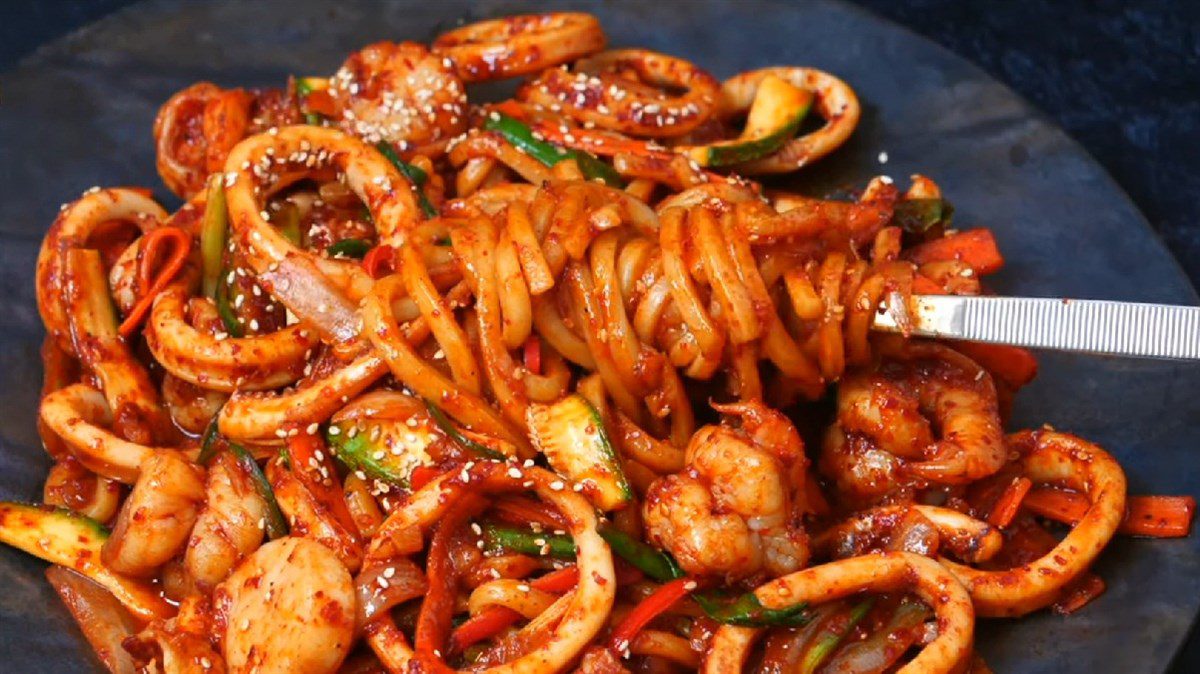
-
Preparation
45 minutes
-
Cooking
30 minutes
-
Difficulty
Medium
Ingredients for Stir-fried udon noodles with seafood Serves 4
Udon noodles 400 gr Fresh shrimp 100 gr Clams 100 gr Squid 100 gr Rice wine 3 tablespoons Soy sauce 6 tablespoons Oyster sauce 2 tablespoons Korean red chili powder 4 tablespoons Sesame oil 1 tablespoon Roasted sesame seeds 3 tablespoons Japanese smoked tuna seasoning 1/4 teaspoon Korean green plum extract 1 teaspoon Carrot 1/2 piece Onion 1/2 piece Zucchini 1/2 piece Horn chili 1/2 piece (red) Garlic 10 cloves Minced ginger 1/2 teaspoon Green onions 4 stalks
How to choose fresh ingredients
How to choose fresh carrots
- You should choose carrots that are slender, of moderate size, with green tops, and feel firm when picked up, not too soft. Avoid choosing carrots that are bruised all over, have cracks, or are missing a piece.
- Choose carrots with intact, smooth skins, not rough.
- Pick carrots that have an even orange color; avoid those that are too dark, as they may have been treated with pesticides.
How to choose fresh squid
- Fresh squid will have a deep brown color at the head, not pale, and the body will be milky white and usually has a shiny skin, feels firm to the touch, and has very good elasticity.
- Fresh squid’s eyes are usually very clear, and you can see the pupil inside; if the squid’s eyes turn cloudy, it is no longer fresh.
- The squid’s tentacles must be intact and firm. The squid’s beard should be tightly attached to the head; if it is soft and easily separates, the squid has spoiled.
How to choose fresh shrimp
- You should choose fresh shrimp with a translucent shell that still has a slight smell of seawater, not fishy. Do not buy shrimp with dark patches or inconsistent colors.
- Avoid purchasing slimy shrimp, those with curved bodies forming a circle, and if you feel roughness on the shell when moving your fingers over it.
- Fresh shrimp usually have their tails curled together. If the shrimp’s tail is spread out, it has likely been injected with chemicals or water to make it appear plump.
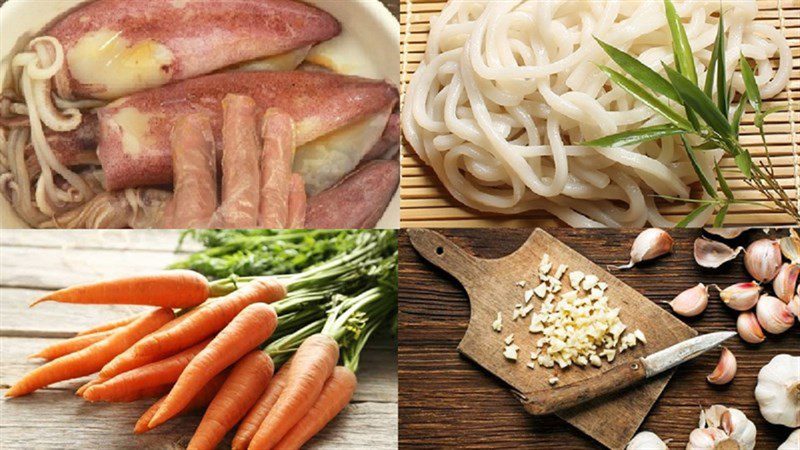
How to prepare Stir-fried Udon Noodles with Seafood
-
Preparing Squid
After buying the squid, you need to clean it thoroughly to remove dirt and the characteristic fishy smell of squid, which will help make the dish more delicious.
You should remove all the internal organs and the ink sac, wash it well, and then cut it into bite-sized pieces.
Cleaning squid to eliminate fishiness: Add 2 tablespoons of white wine to the squid and soak for 15 minutes. The wine can help reduce the fishy smell of the squid and make it crispier.
See more: 5 common types of squid and how to clean fresh squid quickly
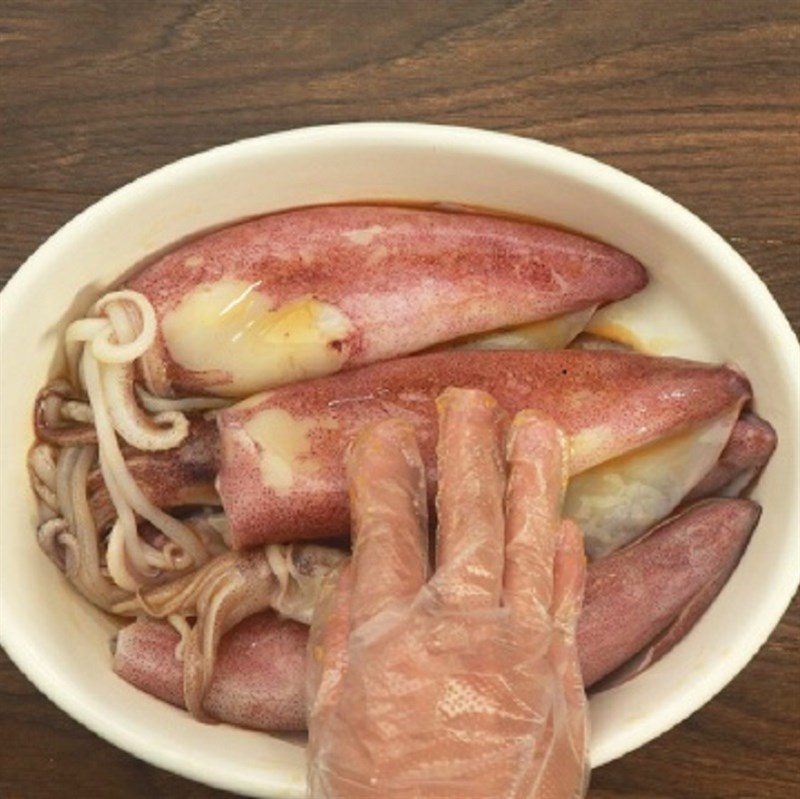

-
Preparing Shrimp
Remove the shrimp head, peel the shell, then use a small knife to make a slit along the back to remove the shrimp vein. You can gently squeeze the shrimp body to make the vein stick out a bit and then pull it out with your fingers.
After that, wash the shrimp and let it drain.
Quick tip for removing the black vein on the back of shrimp
- You can count backward from the shrimp tail up to the second groove connecting the two segments of the shrimp shell, insert a toothpick through this spot and gently pull the black vein out.
- You don’t need to cut the back of the shrimp; you can also use a toothpick to poke out the head of the shrimp body to see the black vein. Gently pull this black thread out, and the shrimp will be clean.
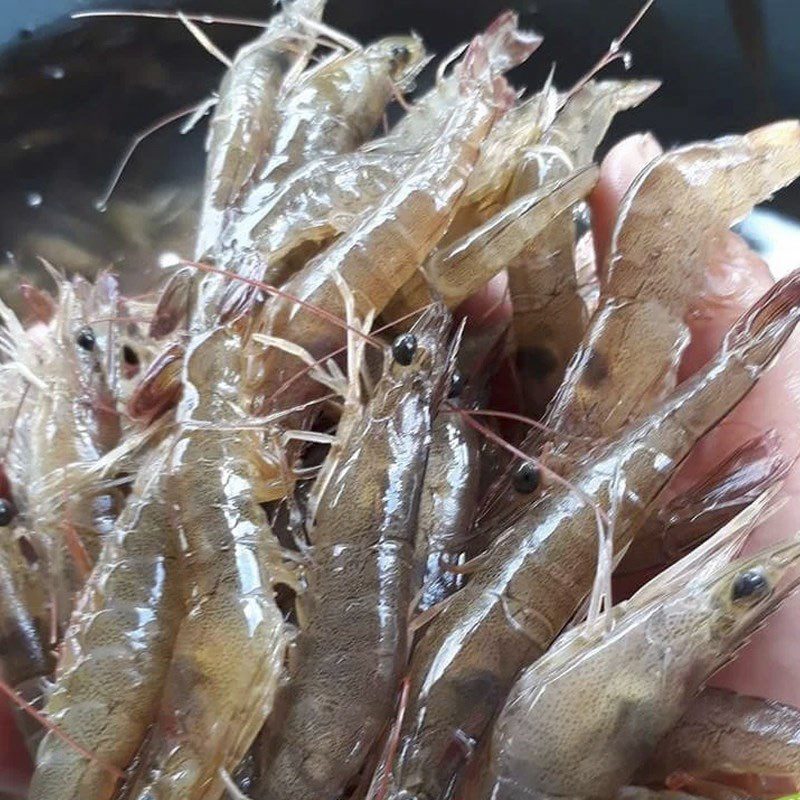
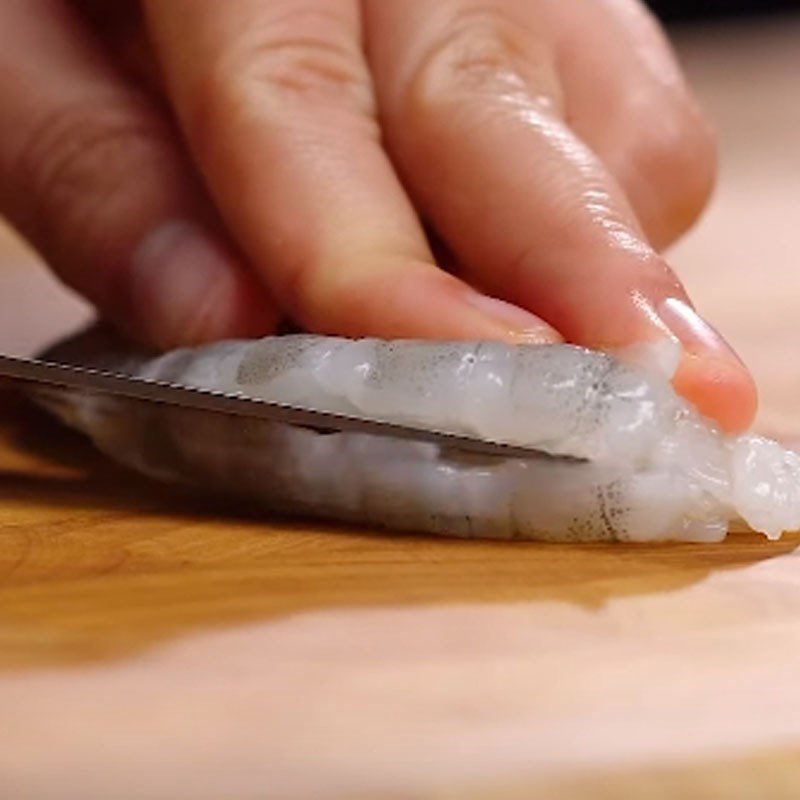
-
Prepare the scallops
If you buy scallops with shells, soak them in clean water for about 2 – 3 hours before separating the meat from the shell. This step helps the scallops release sand and dirt.
Use a knife to pry the meat, gently separate the scallop flesh from the shell, and remove the thin membrane around the scallop meat, muscle, and black stomach.
The final and most important step is to rinse the scallop meat repeatedly with clean water to completely remove any remaining sand and dirt. Do not let water flow directly onto the scallop meat; rinse gently, as the prepared scallops will be tastier and safer for health.
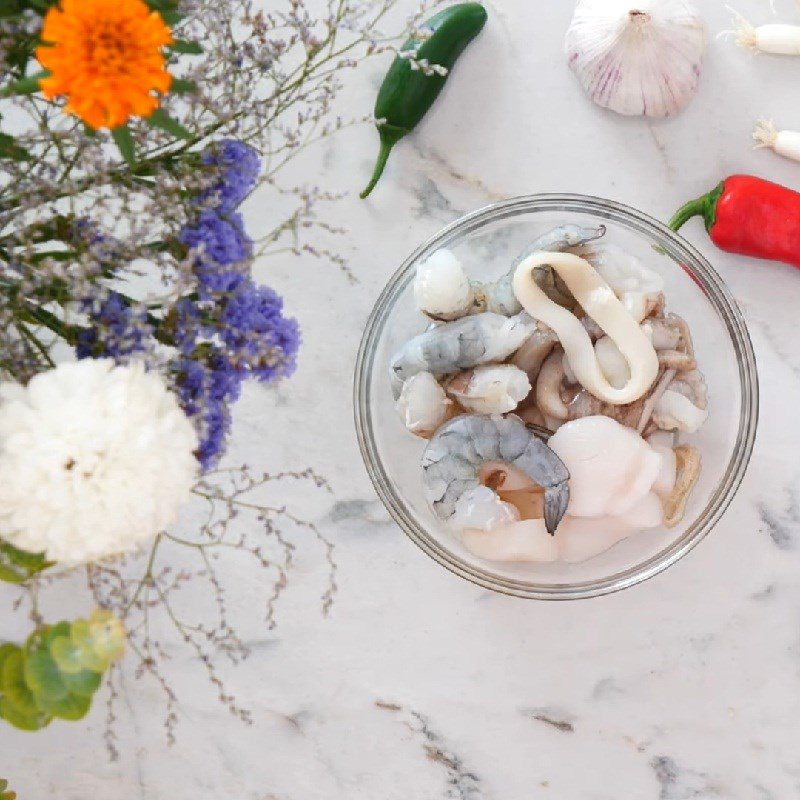
-
Prepare other ingredients
Carrots cut into strips about 5 cm long, zucchini sliced.
Bell peppers washed, cut off the stems, remove the seeds, and cut into bite-sized pieces; green onions cut into 3 cm sections.
Onions cut into wedges.
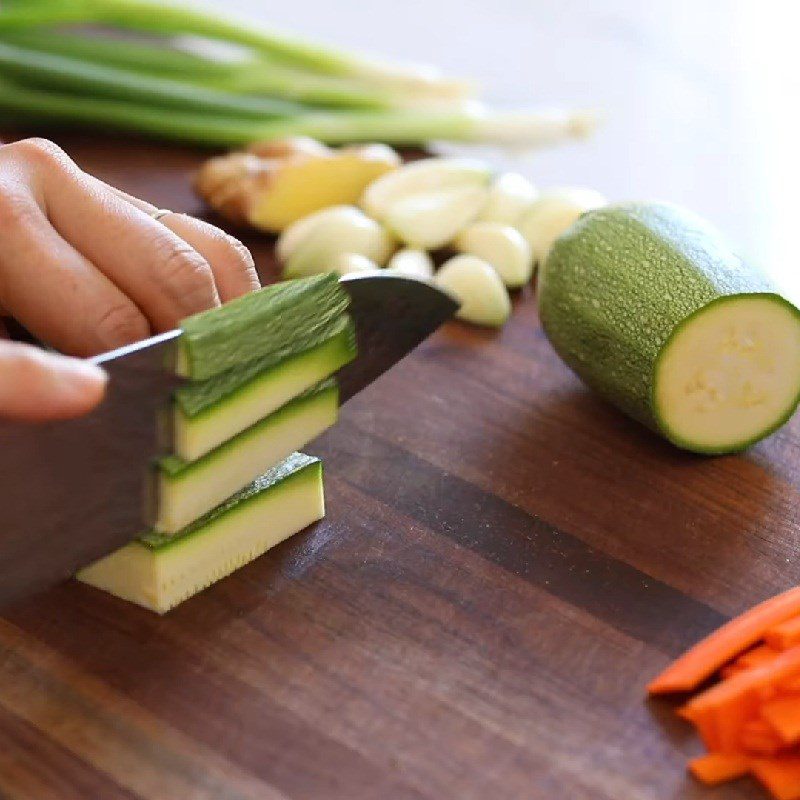

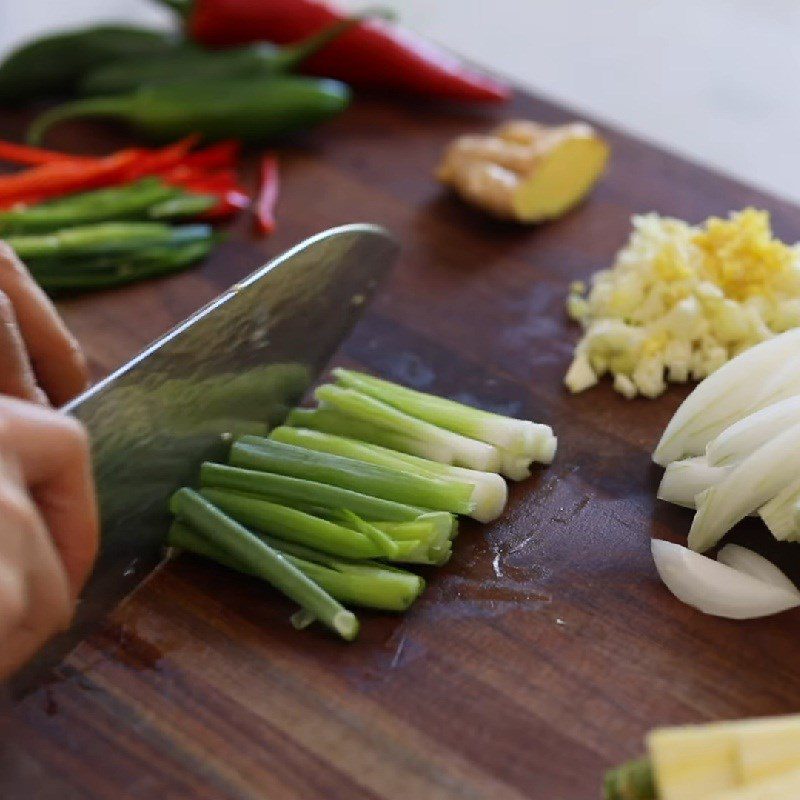
-
Make the marinade sauce
After preparing the seafood, place it in a bowl and marinate with 1 tablespoon of rice wine and 1 tablespoon of soy sauce for 10 to 20 minutes.
In a separate bowl, add the following ingredients: 5 tablespoons of Korean soy sauce (or regular soy sauce), 2 tablespoons of oyster sauce, 2 tablespoons of rice wine, 4 tablespoons of Korean red pepper, 1/2 teaspoon of smoked paprika, 1/4 teaspoon of smoked tuna seasoning from Japan (if desired), and 1 tablespoon of Korean green plum extract (you can substitute it with apricot jam or apple jam).
Then mix all the seasonings together, and you have completed the sauce.
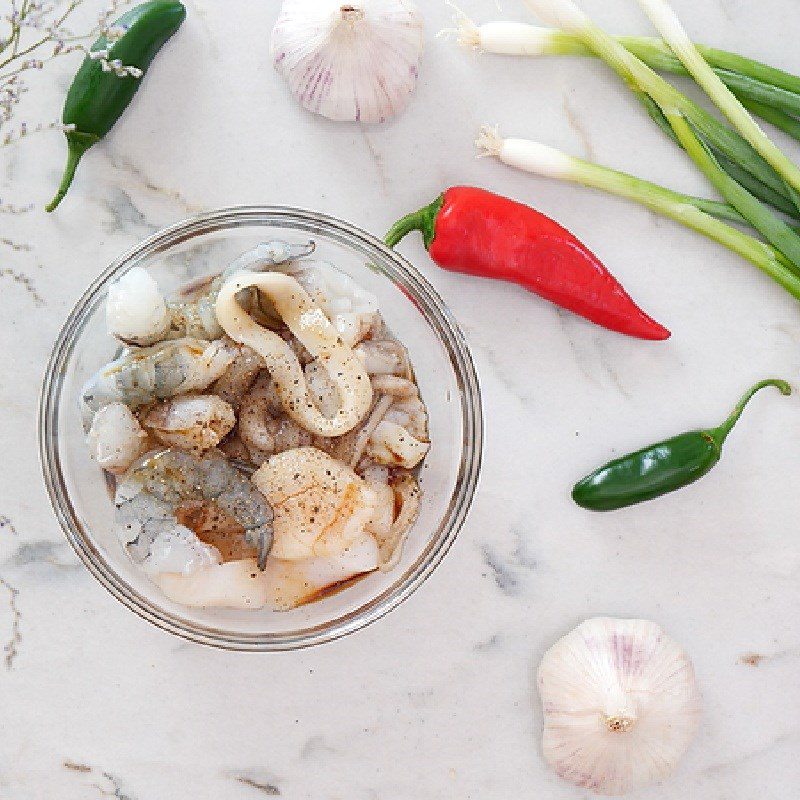
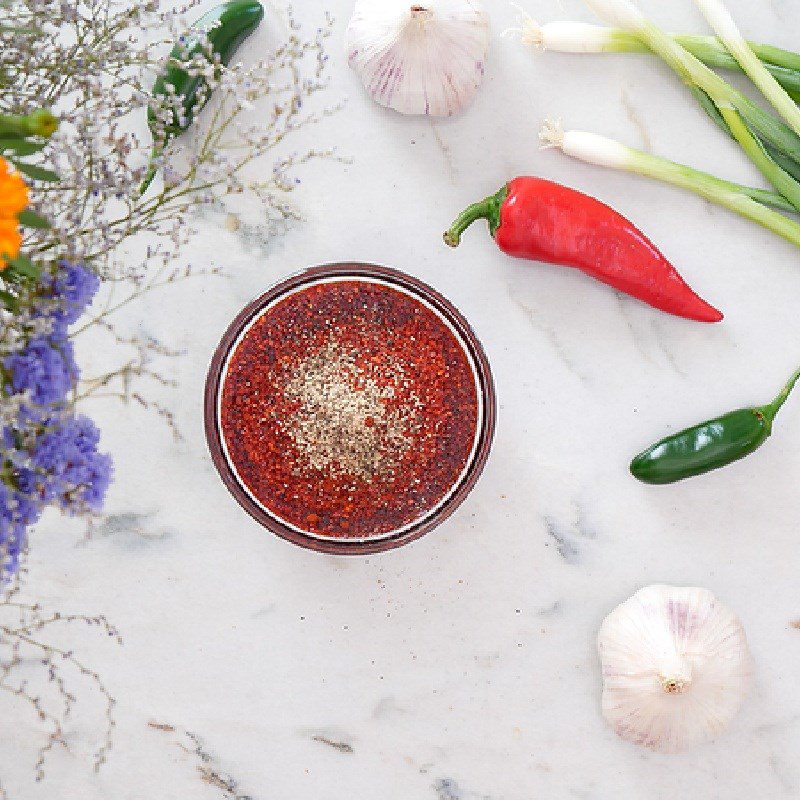

-
Blanch the udon noodles
Place a pot of water on the stove, wait for the water to boil, then add the udon noodles and cook on high heat for about 5 minutes before removing the noodles. Place the noodles in a bowl of cold water, mix well, then remove them.
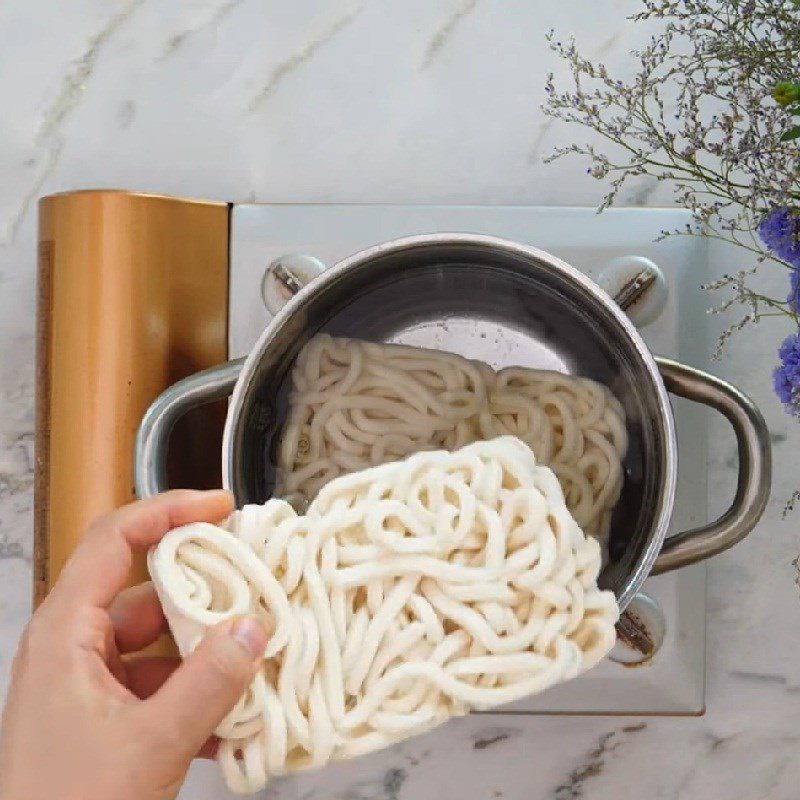
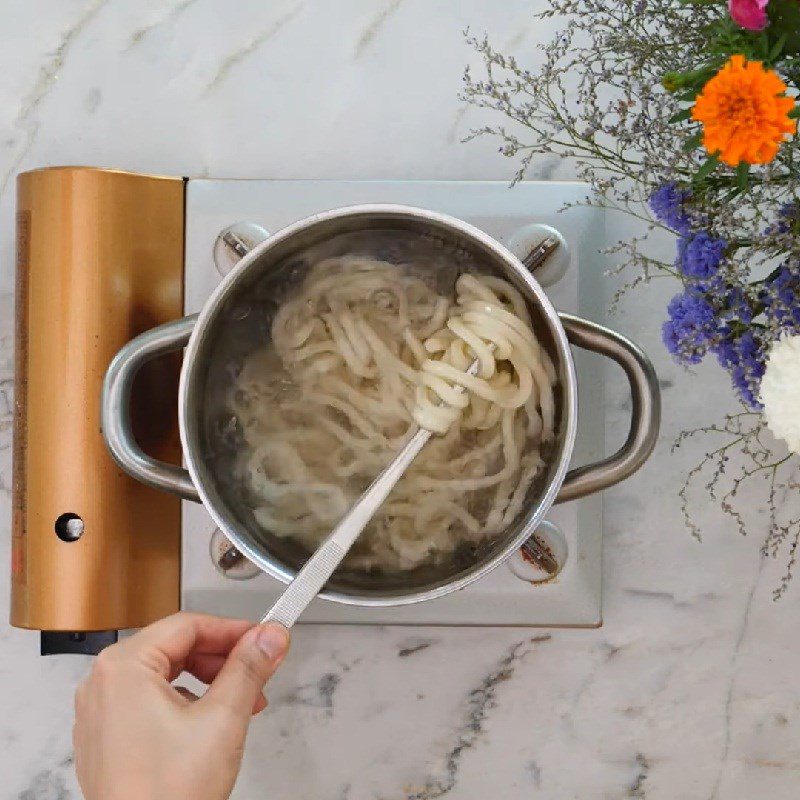
-
Stir-fry ingredients
You place a pan on the stove over high heat, add cooking oil, and swirl it around to coat.
Add minced garlic and ginger, stir-fry until fragrant, about 30 seconds to 1 minute.
Add thinly sliced carrots and onions, stir-fry for 30 seconds to 1 minute, then add the marinated seafood. Stir-fry for about 5 minutes until the seafood is just cooked through.
Quickly add zucchini, pour the sauce mixture in, and stir-fry for about 45 seconds to 1 minute.

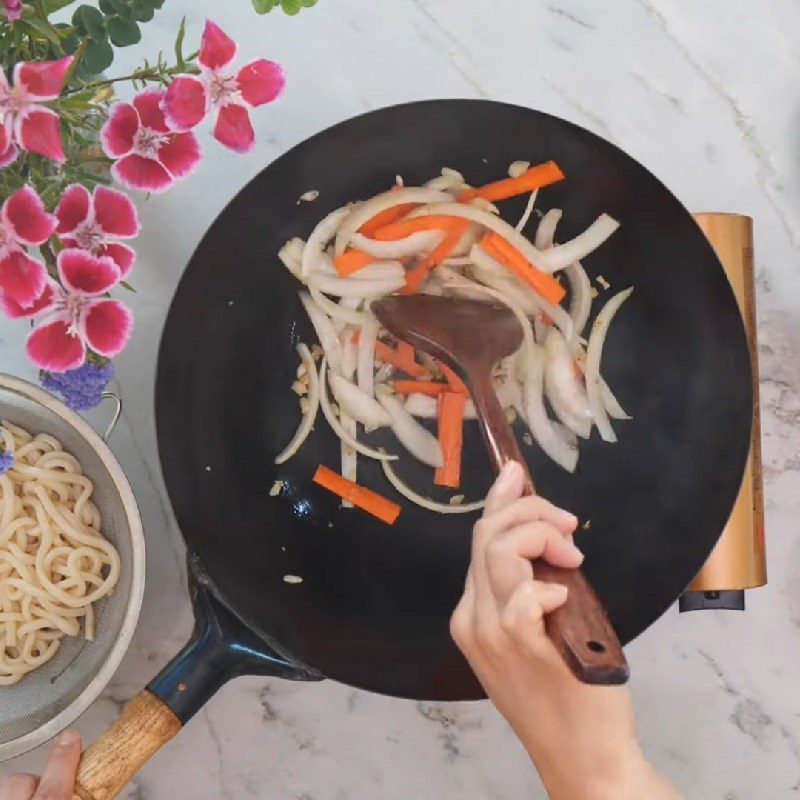
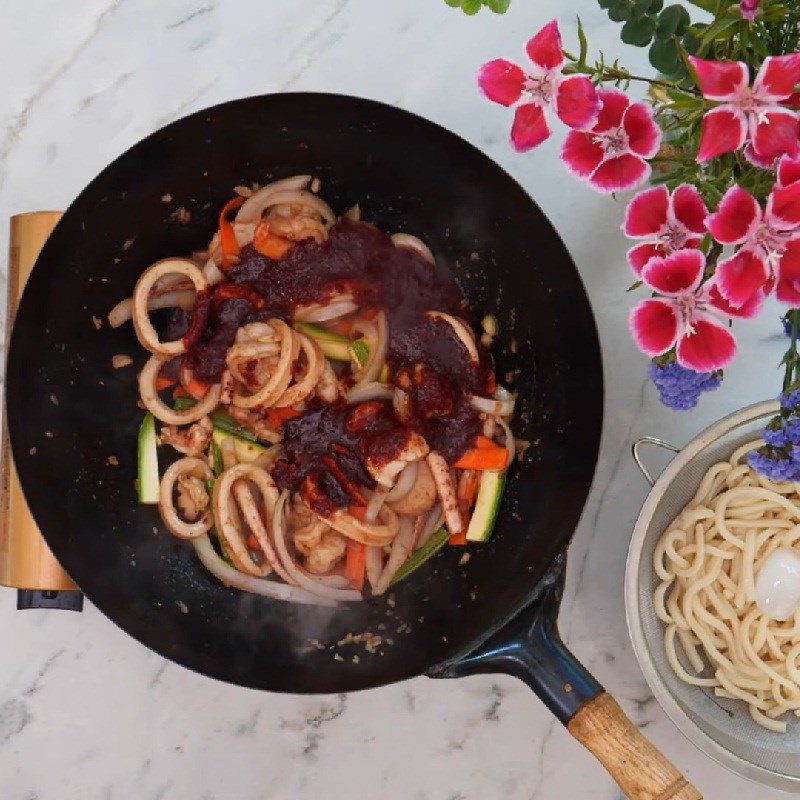
-
Completion
The stir-fried ingredients are now cooked, at this point, you add the noodles and stir-fry until the noodles are evenly coated with the sauce, add chopped green onions and chili, and mix well.
Finally, add 1 tablespoon of sesame oil and mix well.
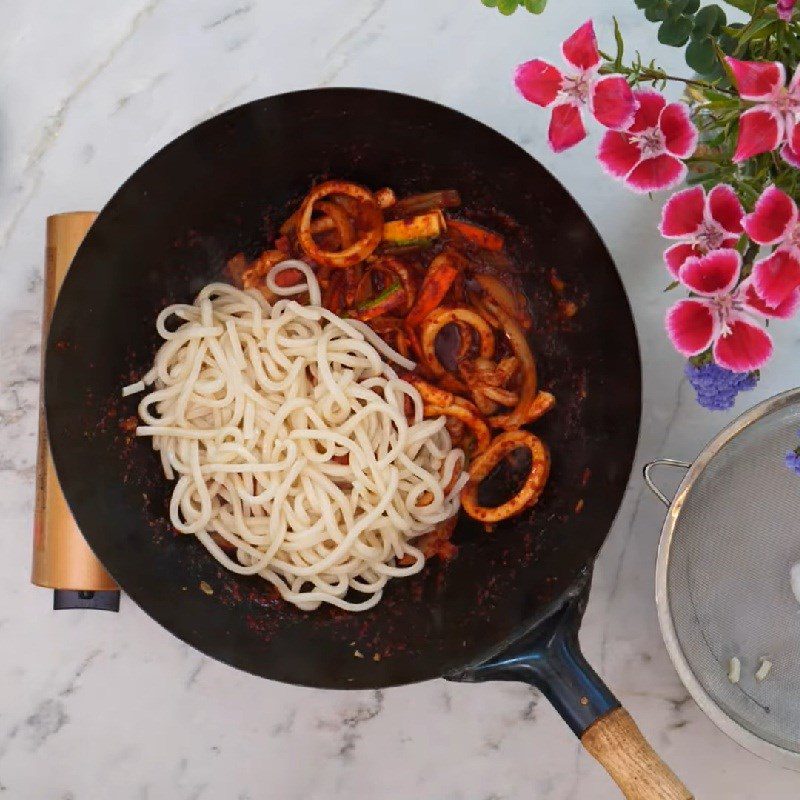

-
Final Product
Transfer the noodles to a plate and sprinkle with some toasted sesame seeds. Now you have a delicious and appealing plate of stir-fried Udon noodles to treat your family and friends.
The delicious, attractive plate of noodles is eye-catching with glossy, chewy noodles combined with the slightly spicy flavor of the sauce, the sweetness of seafood and vegetables, creating a rich taste of the dish. It’s easy to make, isn’t it?
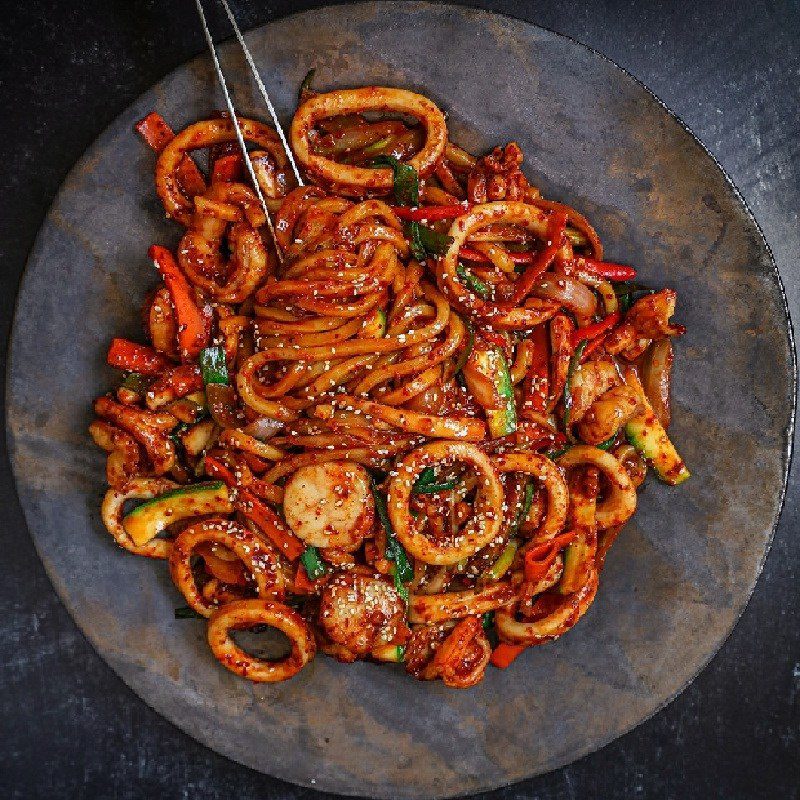
2. Stir-fried Udon with Pork
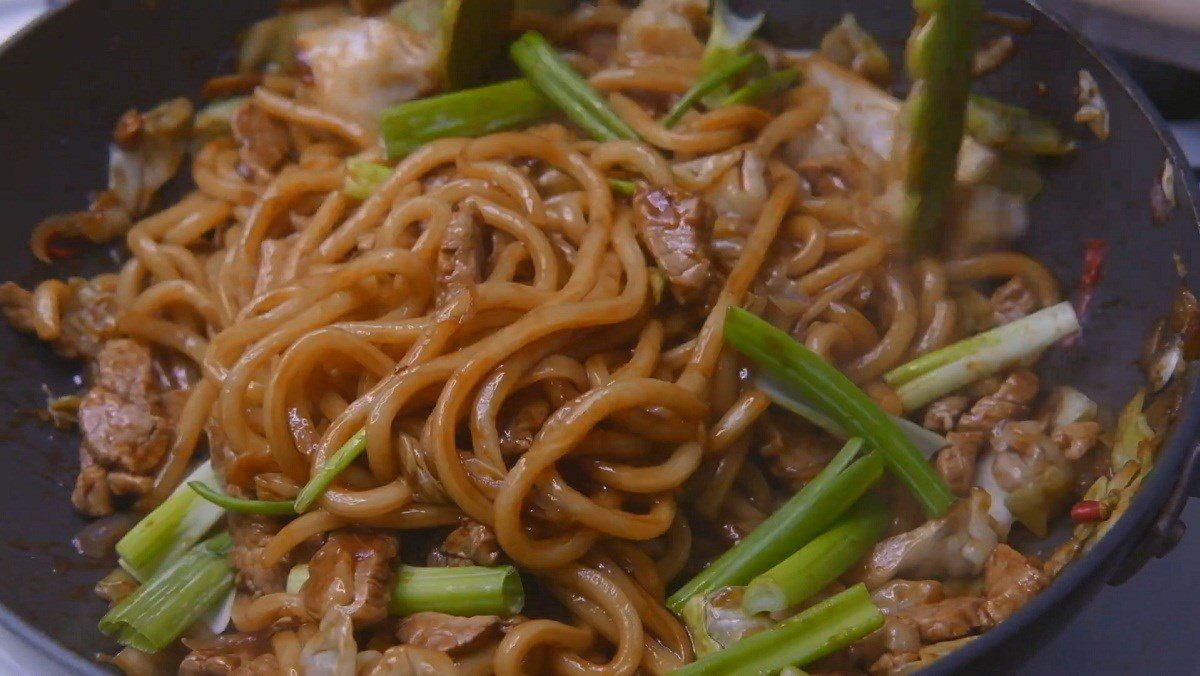
-
Preparation
30 minutes
-
Cooking
20 minutes
-
Difficulty
Easy
Ingredients for Stir-fried Udon with Pork Serves 4
Pork 250 gr Udon noodles 400 gr Cabbage 250 gr Chicken broth 1/4 cup Shallots 4 bulbs Garlic 3 cloves Chili 3 pods Green onions 1 stalk Soy sauce 1 tablespoon Dark soy sauce 1/2 tablespoon Oyster sauce 1 tablespoon Sesame oil 2 tablespoons Cooking oil 1 tablespoon Common seasonings a little (salt/sugar/seasoning powder)
How to choose fresh ingredients
How to choose good pork
- You should choose pork that has a bright pink color, depending on your preference you can choose belly or lean meat.
- When pressing on the meat, it should be elastic and have no strange smell.
How to choose good cabbage
- Good cabbage is usually firm, heavy, with tightly packed leaves, a thick head, closed tightly, and a small stem.
- The cabbage leaves should be light green or white-green.
- Avoid buying cabbage with yellow leaves, brown spots on the leaves, a cracked core, or a stem that has turned brown, as this may indicate old or wilted cabbage.
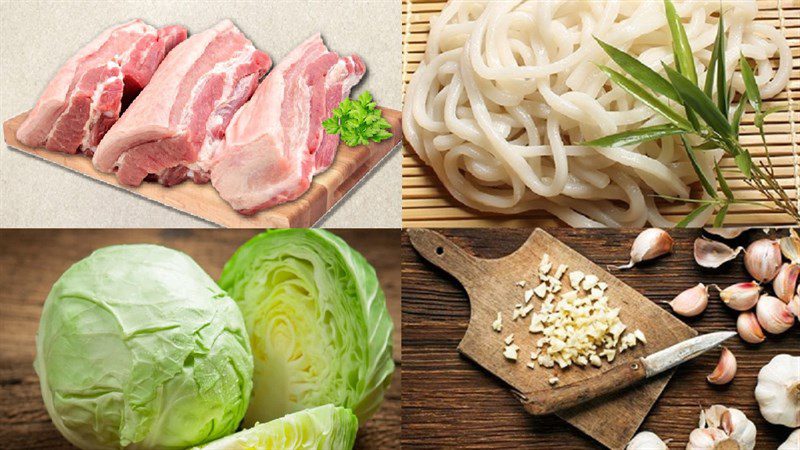
How to prepare Stir-fried Udon Noodles with Pork
-
Prepare the pork
After buying the pork, wash it briefly and rub it with salt, then rinse with clean water.
Then, use a knife to cut into chunks and slice the meat for easy eating.
Tip: You should slice against the grain to make the meat more tender when eating and not chewy.
Tips for cleaning pork to remove odor
- First, wash with coarse salt and rinse again with clean water.
- Then, blanch briefly with mashed shallots (or ginger), or blanch briefly with boiling water mixed with a bit of white wine.
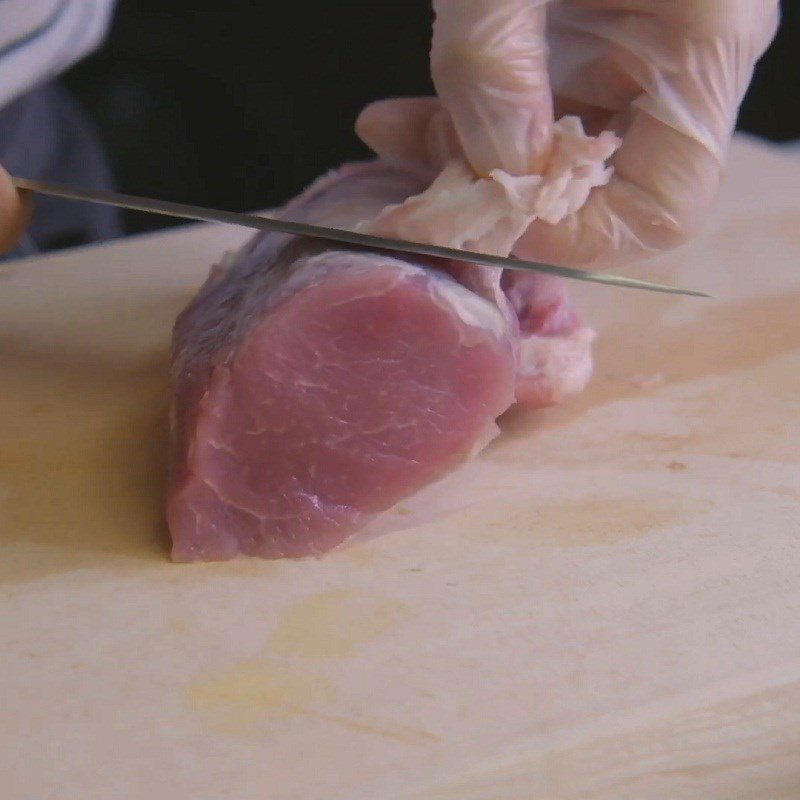

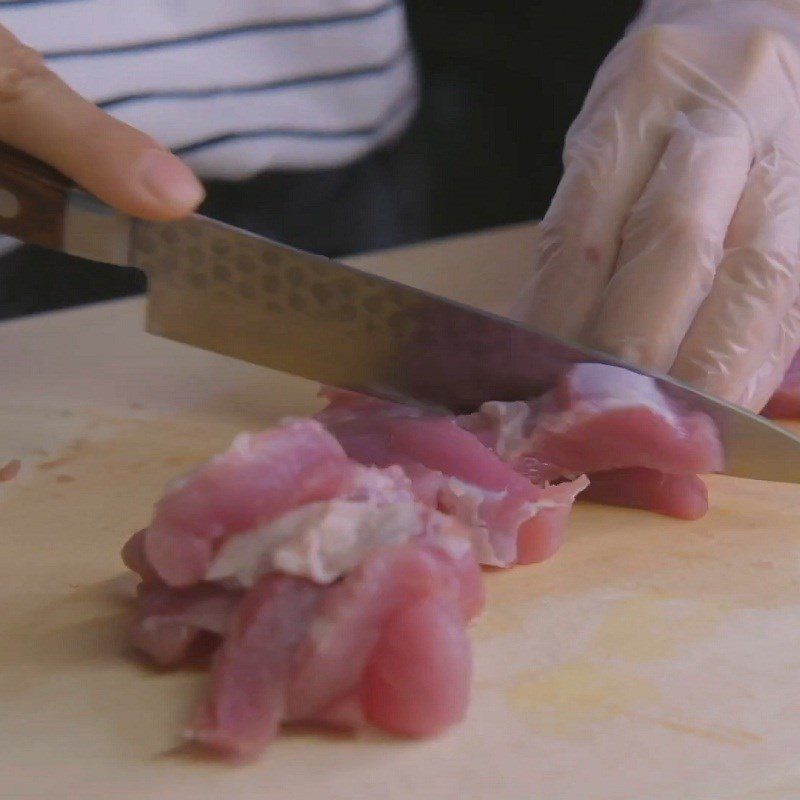
-
Prepare other ingredients
Slice the shallots and garlic. For the chili, remove the seeds from 1 pepper and chop it finely; the other 2 peppers should be cut lengthwise into strips.
For the green onions, divide them into 2 parts: cut the bulbs into pieces about 3 cm long and cut them in half lengthwise, while the green parts should be cut into sections.
For the cabbage, cut it into bite-sized pieces.
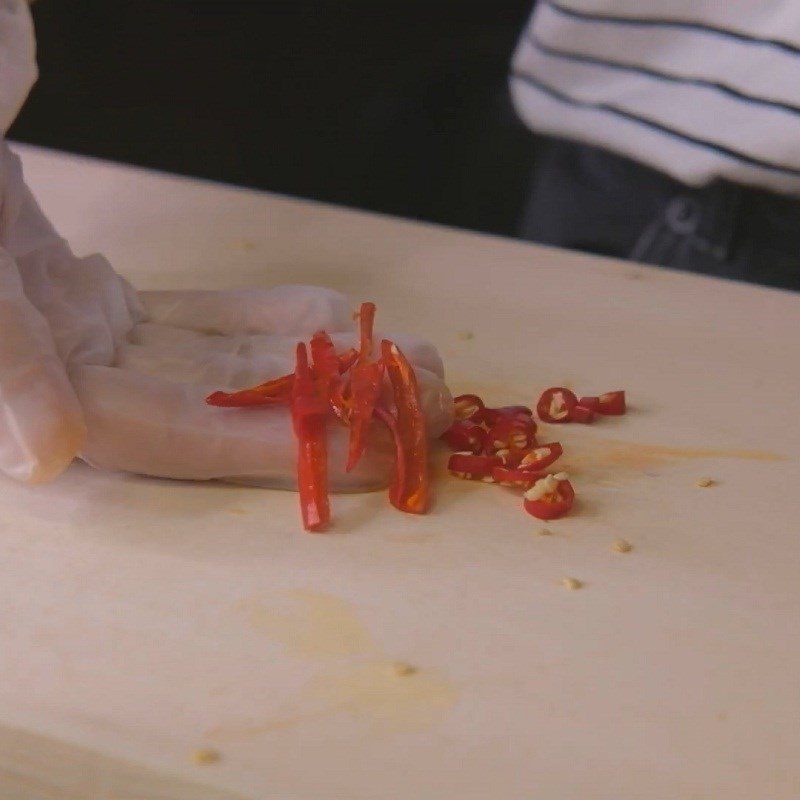


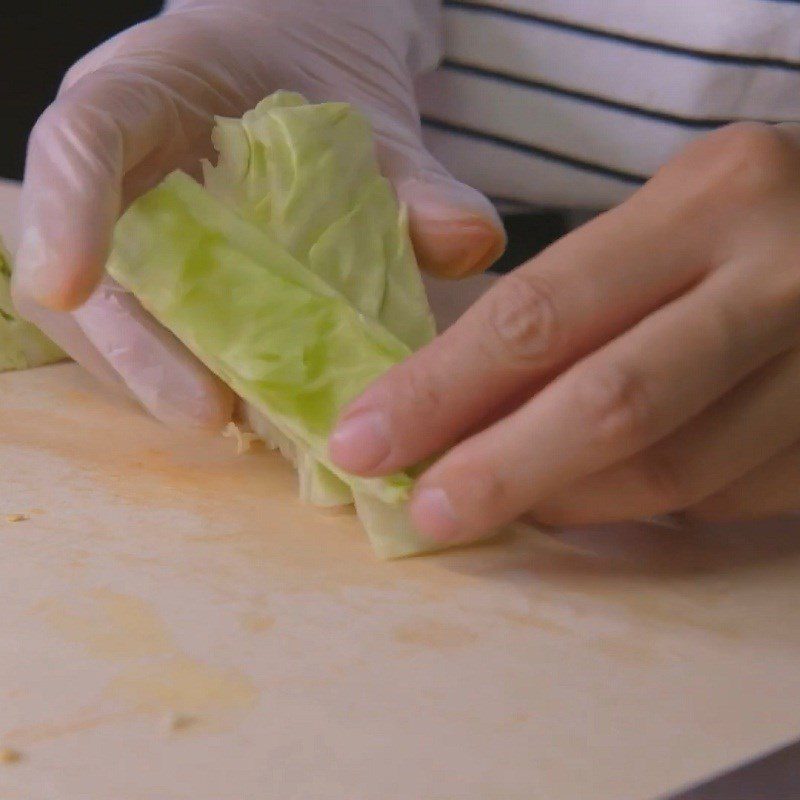
-
Blanch the Udon noodles
Boil a pot of water on the stove, wait for the water to boil, then add the noodles and cook on high heat for about 5 minutes before removing the noodles. Place the noodles in a bowl of cold water, mix well, then drain.


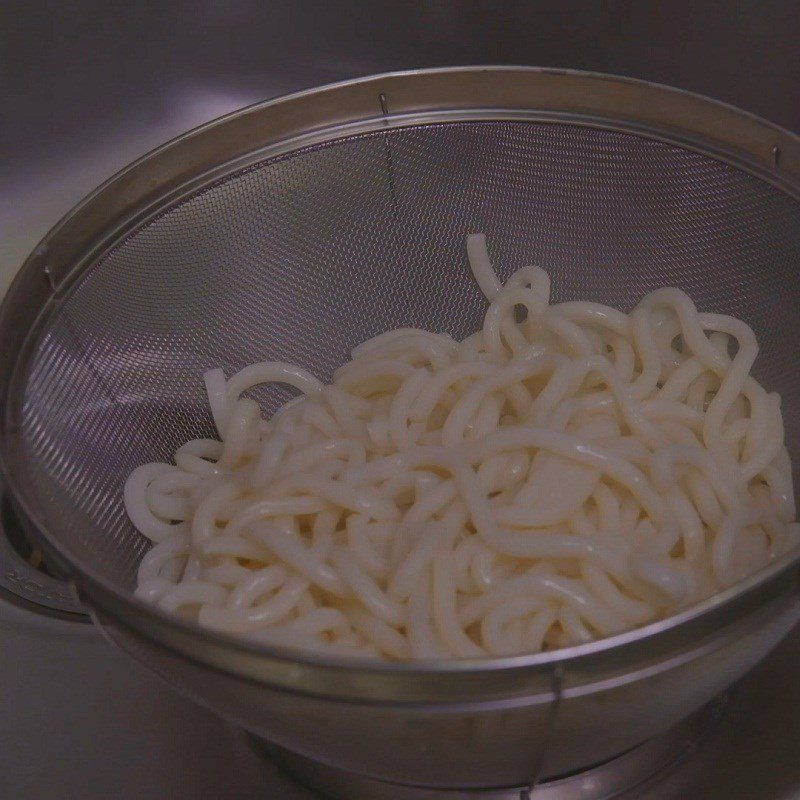
-
Making Stir-Fry Sauce
You put in a bowl 1 tablespoon of soy sauce, 1/2 tablespoon of dark soy sauce, 1 tablespoon of oyster sauce, 1 teaspoon of sugar, 2 tablespoons of sesame oil and mix well.

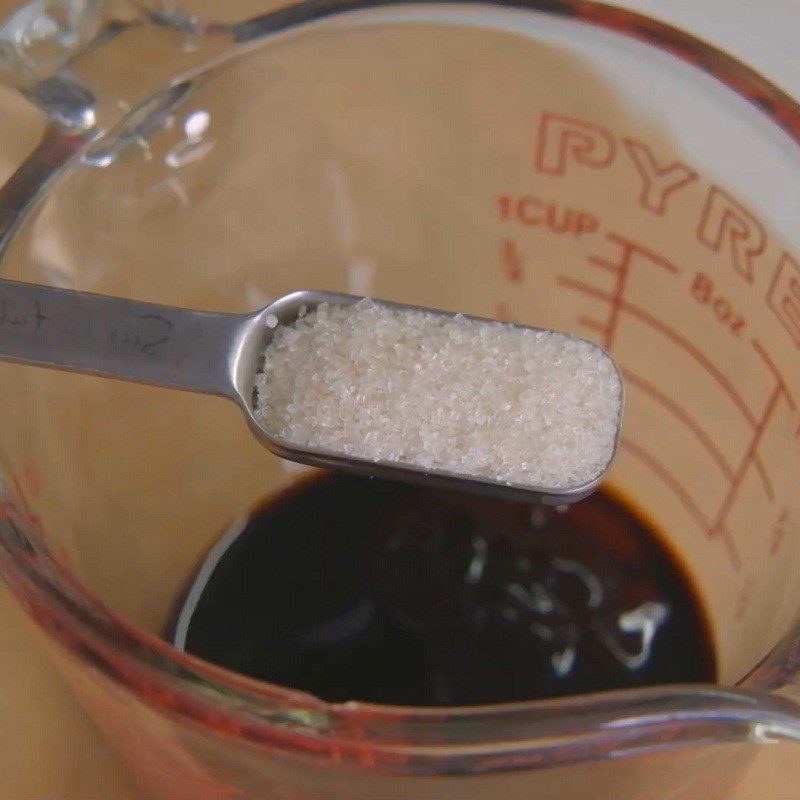
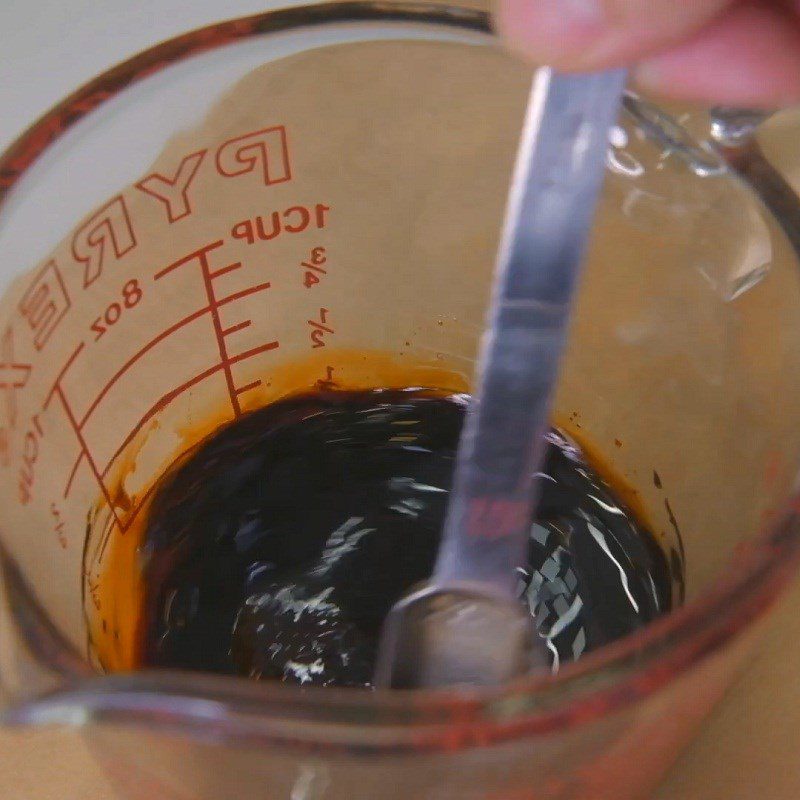
-
Stir-Frying Pork
You turn on high heat, place the pan on and add 1 tablespoon of cooking oil, when the pan is hot, you add the sliced white onion and sauté until fragrant, then add sliced garlic, shallots, and chopped chili pepper and stir well.
Next, you add the pork, sprinkle with 1/2 teaspoon of salt and stir until the meat is cooked.
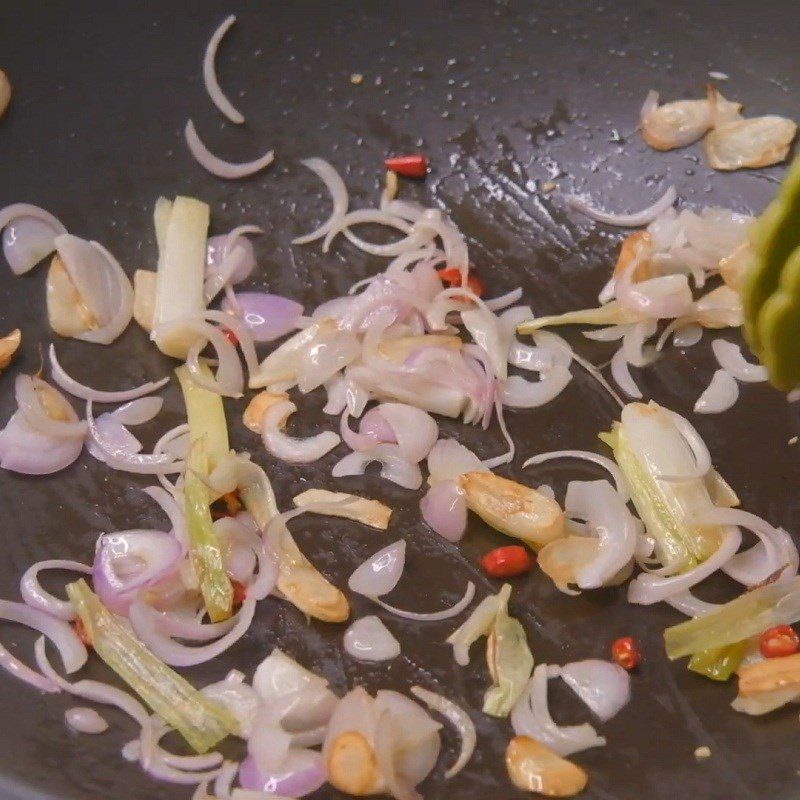
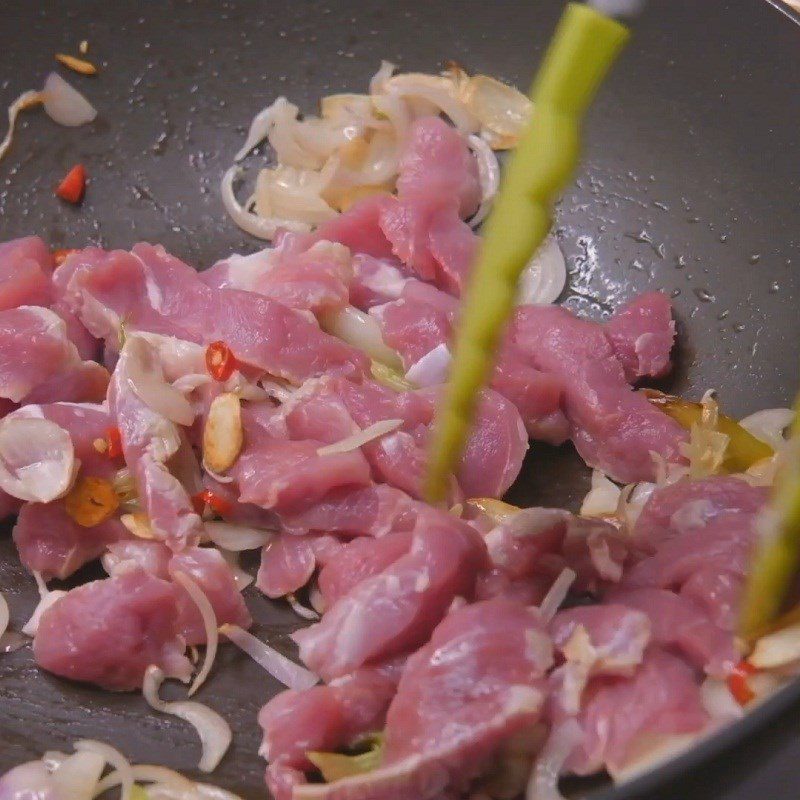
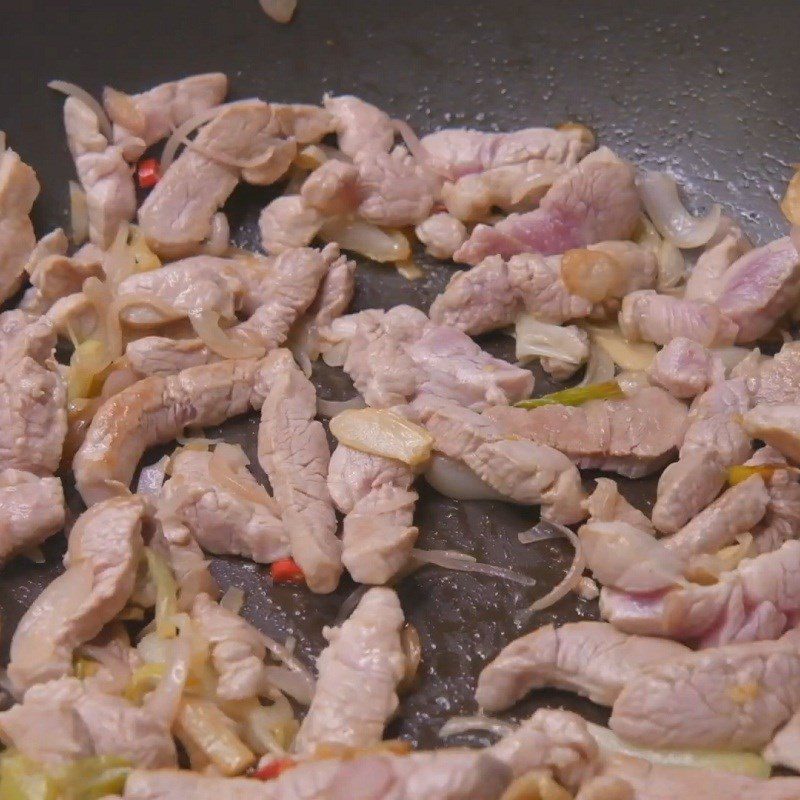
-
Completion
When the meat is cooked, add the cabbage and stir well. Wait until the cabbage is nearly cooked, then add the sliced chili, blanched udon noodles, and the prepared sauce, mixing everything well.
Next, add 1/4 cup of chicken broth (you can substitute with water if you don’t have chicken broth prepared).
Continue to stir the noodles for 2 – 3 minutes to allow the noodles and vegetables to absorb the flavors of the sauce. Finally, add the chopped green onions, mix well, and turn off the heat.
And there you have it, the dish of stir-fried udon noodles with pork is complete.
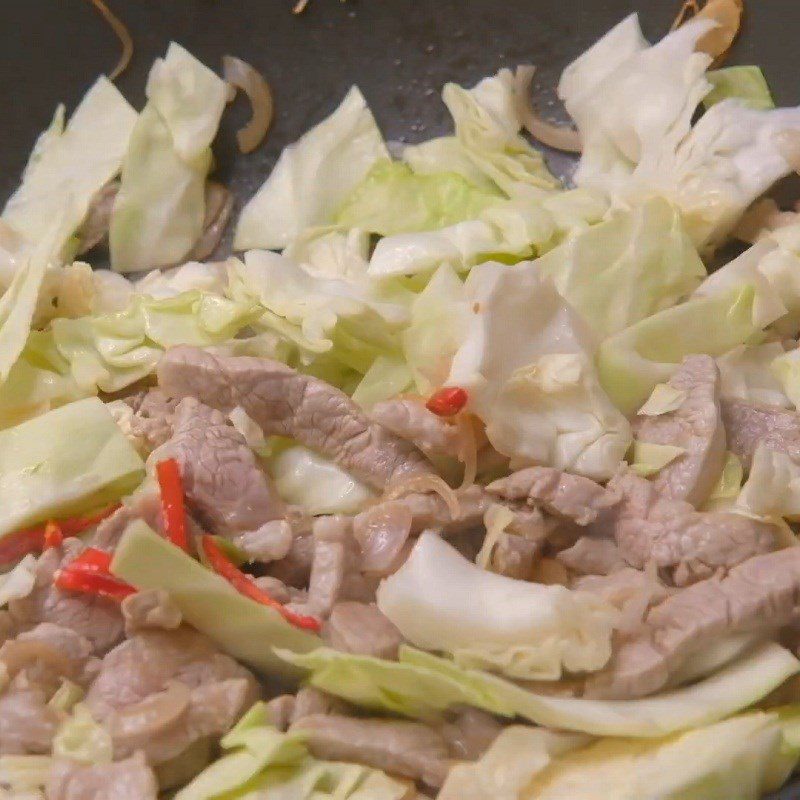
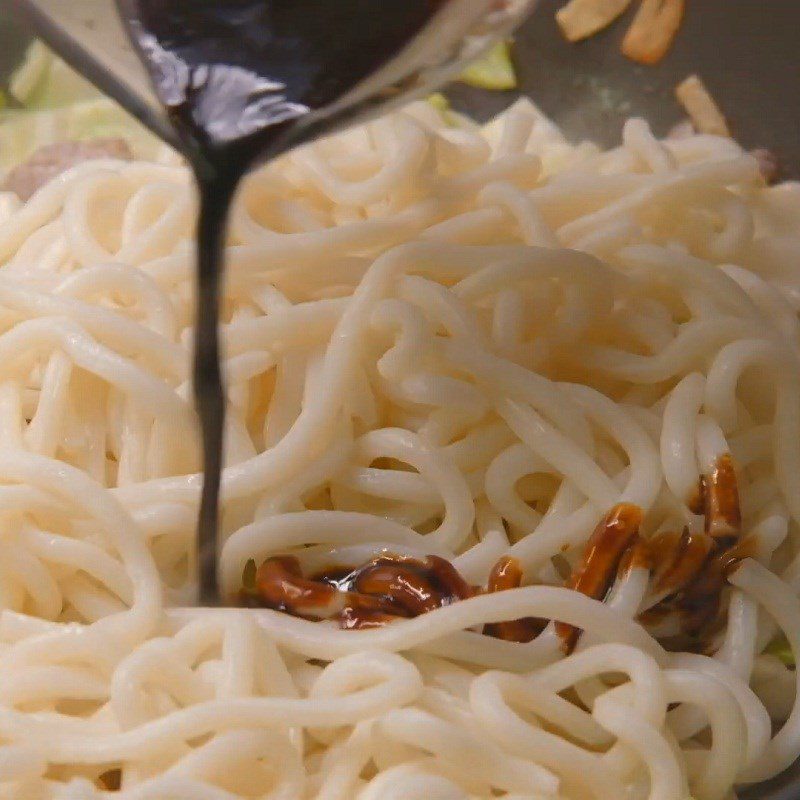
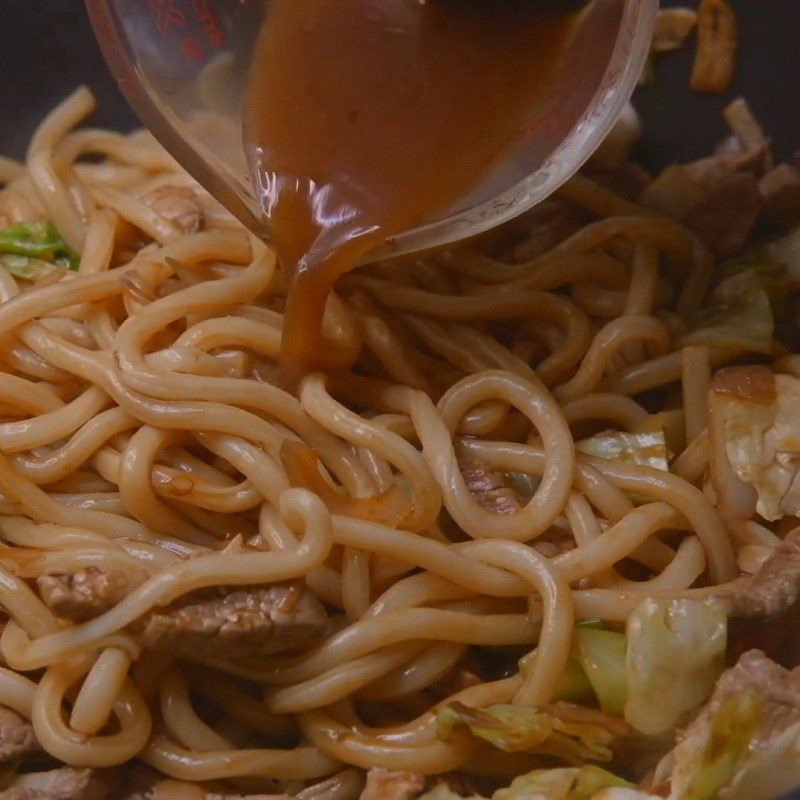

-
Final Product
The udon noodles are chewy and delicious, served with pork, cabbage, infused with the rich flavor of the sauce, and the slight spiciness of the chili creates an attractive and unique taste. It’s really delicious, appealing, and easy to make, isn’t it!
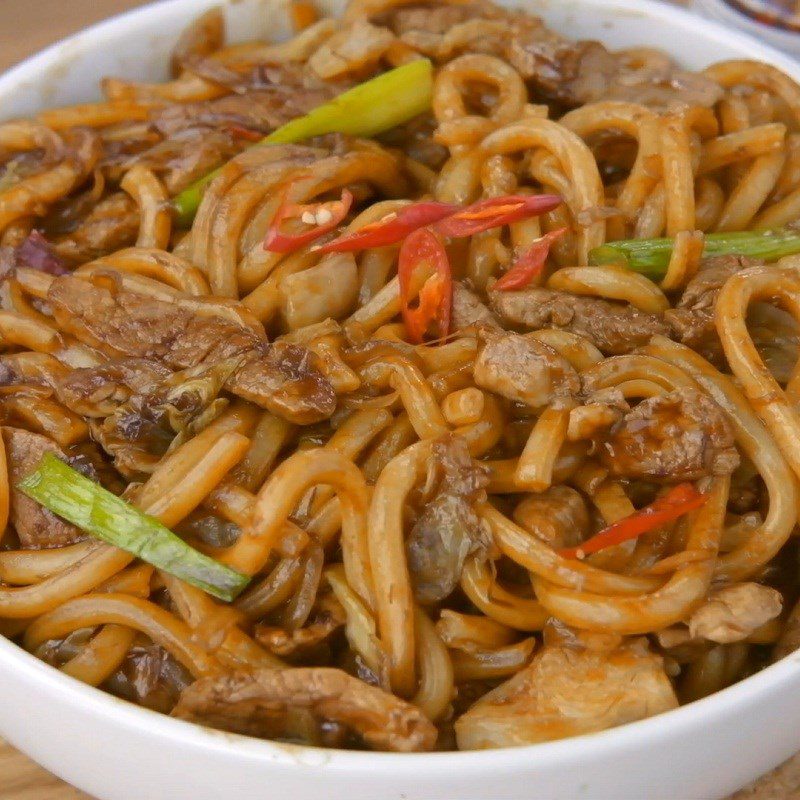
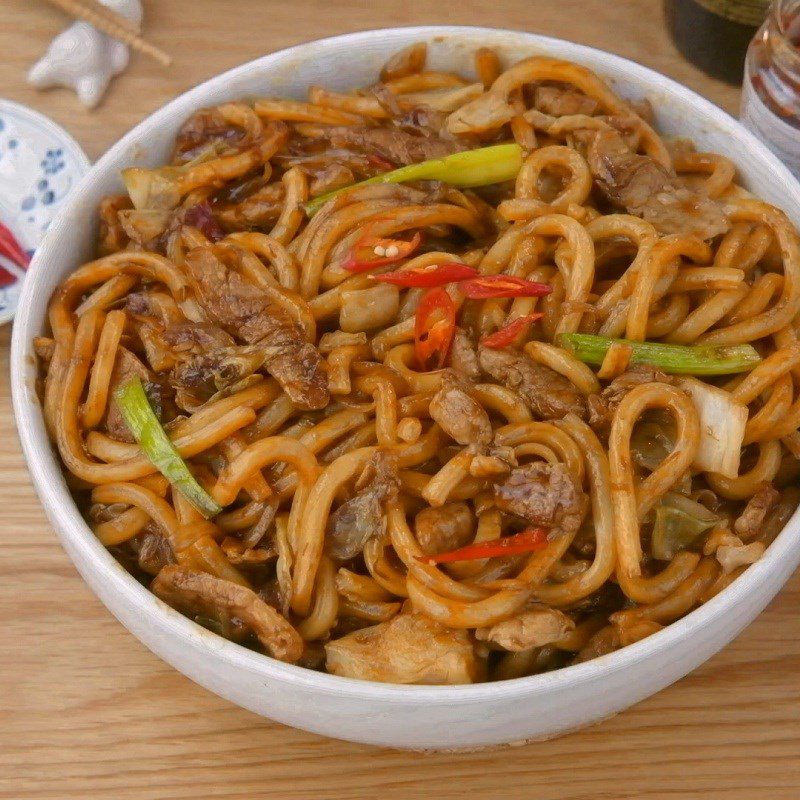
How to cook delicious udon noodles without getting them mushy
- Turn the heat to high to bring the water to a boil, then add the dry udon noodles to the pot.
- About 1 minute later, the udon noodles will float to the surface; use chopsticks to stir so that the noodles do not stick together.
- Once it boils again, stir with chopsticks; if the noodles are floating but not yet cooked, continue boiling for another minute.
- Next, rinse under cold water until the udon noodles are no longer slimy, gently rubbing while rinsing. Repeat this about 3 or 4 times until the udon noodles become smooth.
- Drain the noodles in a colander to remove excess water.
See more
Hope you will succeed in making this stir-fried seafood and pork udon dish!
*Refer to the recipe and images from the Youtube channel Seonkyoung Longest and Soy and Pepper









